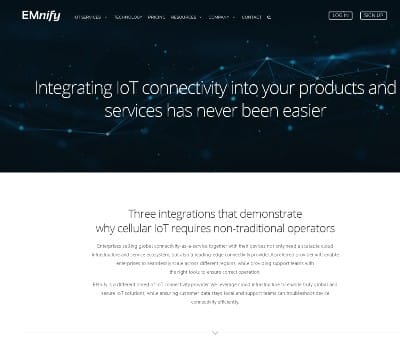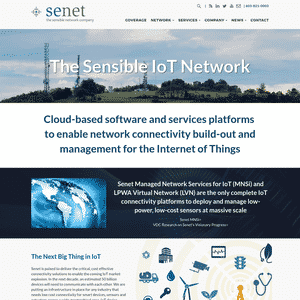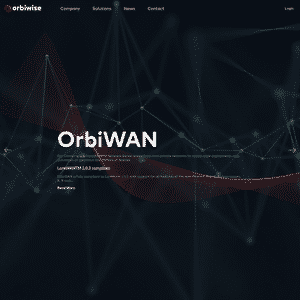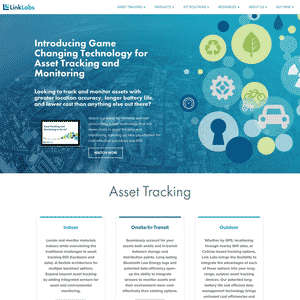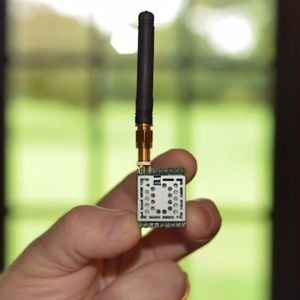
LoRa Network Protocol and Long Range Wireless IoT
LPWAN Internet of Things (IoT) Networking Technology; A guide to the standard and its coverage, protocol stack, range and compatible chips and gateways...
Connected devices have so far mostly run piggyback on the same networks and protocols that support the Internet and mobile communications — cellular, Wi-Fi, Bluetooth, etc. But embedded sensors and other distributed Internet of Things devices have different network requirements than those of computers, phones or tablets. When humans use the Internet we access data irregularly and in large chunks like websites or streaming videos. Remote sensors and smart machines, on the other hand often only need to send small packets of data at regular intervals, and need to connect in areas away from the traditional infrastructure and a convenient power supply.
Several technologies are starting to address the unique network needs of this class of IoT devices.
The following Channel Guide will help you:
- Better understand where LoRa fits in as compared to other LPWAN solutions like the Sigfox network and NB-IoT.
- Dive deeper into solutions and vendors offering compatible chips, modules and gateways
- Give a better snapshot of technical stack, including frequency bands and expected battery life and range.
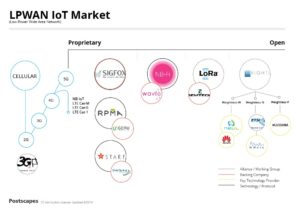
12/01/2020
Featured Firm
EMnify
EMnify is a leading cloud-native IoT connectivity provider that empowers businesses worldwide to get the best out of their devices and overcome industry barriers. EMnify’s connectivity is available in 180 countries with 540 operators globally.
Partner Advertisement
Technology
Basics:
LPWAN stands for Low-Power Wide Area Network
Current Issue: 2G Networks are being sunset (AT&T on January 1, 2017 with other major carriers to follow..) and are not fully suited to IoT applications due to battery life constraints.
- Next gen cellular proposals (LTE MTC) targeting IoT applications are not ready for deployments until 2018 so there is a current gap in the market .
LPWAN Benefits
- Generally uses unlicensed spectrum (868 MHz in Europe and 915 MHz in US for example)
- Range: From a few kilometers in dense urban areas up to 15-30 kilometers in rural areas
- Power: 10+ years of battery life (The device's power produced cannot exceed 10-25 mW, to comply with usage of ISM frequencies, and to limit data consumption and preserve battery life.)
- Radio Chipset cost: $2 or less
- Radio Subscription cost: $1 per device/ year
Additional Highlights
- LPWA most suited for on/off type applications with only a few messages per hour.
- 5-10x fewer base stations required than 3G/4G
- LPWAN capabilities will eventually be integrated into 5G service base stations
How do they work? Each standard uses a different technique to maximize range while minimizing transmission power. Sigfox uses a well-known modulation technique, but transmits slowly in a very narrow band of spectrum to maximize signal penetration. LoRa radios use a modulation technique that can find signal well below the noise floor. Ingenu uses their own novel form of spread spectrum modulation.
Put simply, these radios do some crazy math.
In fact, most of the underlying radio technology here isn’t new — the techniques for encoding signals were invented decades ago. What’s new is that the math has been committed to silicon, and is being produced in scale. So now you can buy a radio chip for a few bucks and add it to any device.
Daniel Conrad
LoRa
LoRa: PHY layer
LoRaWAN: MAC, NWK, & APP built on LoRa
LoRa is a patented ( EP2763321 from 2013 and US7791415 from 2008 ) spread-spectrum radio modulation originally developed by Cycleo (Acquired in 2012 by Semtech)
Semtech owns the LoRa IP, but have licensed the IP to other chip manufacturers like STMicro in 2015 in 2015.

Semtech’s LoRa chips transmit in the sub-gigahertz spectrum (109MHz, 433MHz, 866MHz, 915MHz), which is an unlicensed band that has less interference than others (like the 2.4 GHz range used by Wi-Fi, Bluetooth, and other protocols). At those frequencies, signals penetrate obstacles and travel long distances while drawing relatively little power -- ideal for many IoT devices, which are often constrained by battery life.
Within the sub-GHz spectrum, LoRa chips use a spread-spectrum strategy to transmit at a variety of frequencies and data rates. That allows the gateway to adapt to changing conditions and optimize the way it exchanges data with each device.
Semtech produces transceiver chips for devices to be connected (nodes), and gateways to connect them. A single gateway can communicate with several hudred thousand nodes up to 20 miles away in unobstructed environments, and even in a city can penetrate buildings to achieve a range of several miles. End-nodes can remain operational for a supposed 10 years running on two AAA batteries (drawing 10mA for the receiver, under 200nA in sleep mode).
An industry collaboration focused on promoting LoRa was unveiled at the 2015 Mobile World Congress in Barcelona. The LoRa Alliance is a non-profit, open membership organization. Founding companies include technology suppliers and telecom operators:
| Tech Suppliers | Telecoms |
|
|
Cellular
EC-GSM-IoT for 2G networks
LTE-MTC (LTE for machine-type-communications)
NB-IoT - Can use both 2G and 4G spectrum
LTE-Advanced Pro, 5G
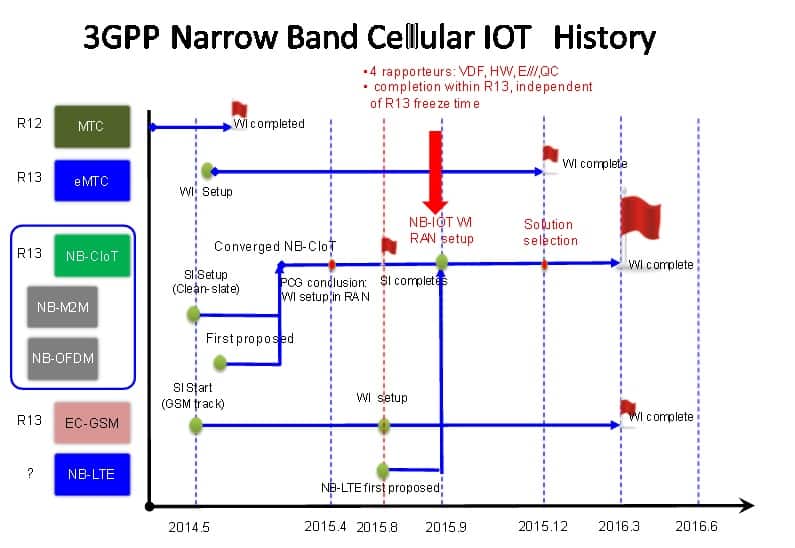

Weightless
Weightless-W (Original - Whitespace focused)
Weightless-N (Born out of NWave’s technology.)
Weightless-P, (Born out of M2COMM (Platanus) technology
Weightless Standards Comparison
RPMA - From Ingenu
Created by Ingenu (formerly OnRamp Wireless) their RPMA LP-WAN (random phase multiple access) uses 2.4 GHz ISM so that it avoids some of the geographic differences compared to other solutions using license free bands.
RPMA’s uplink capacity cann support up to 2 million devices per tower.
NB-Fi (Narrowband Fidelity) - WavIoT
- "NB-Fi LPWAN technology covering a full stack of OSI model layers from physical PHY to application APP. Full duplex gateways based on bi-directional SDR principles accompanies with 3 × 120-degree sector antennas and self-designed SDR receivertransceiver result in the sensitivity of -154 dB and ensure a total link budget of up to 194 dB. The effective distance proven in numerous use cases is more than 50 km in the countryside and 16 km in the urban area."
- "Open Standard"
- Supporting radio hardware and compliant MAC architectures in 915 MHz, 868 MHz, and 433 MHz ISM bands, as well as other sub-GHz license-free spectrum.
Additional:
CyNet, Silverspring Starfish, Dash7, Wi-Fi HaLow, Telensa Ultra-Narrow-Band
Solution Providers
Alliances & Governing Bodies
Alliances
Wireless IoT Forum - Broad industry group
- Founding board: Accenture, Arkessa, BT, Cisco, Telensa, WSN
LoRa Alliance (LoRa)
- Member list (19 Sponsor and 130+ total members)
3GPP (LTE-Cat M)
- 506+ Members
Weightless SIG
- Promoter Group Members: Accenture, ARM and M2COMM
Groups
IEEE 802.15 WPAN Task Group 4k (TG4k) Low Energy Critical Infrastructure Networks
ETSI Low Throughput Networks
Specs
3GPP NB-IOT - Release 13
LoRaWAN 1.0 Specification (Email required)
NB-Fi Protocol (Email required)
Hardware
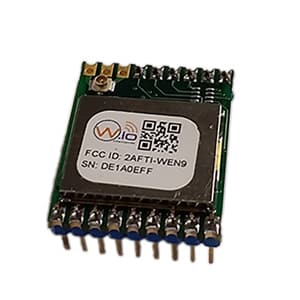
Whisker
WhiskerRF is a long-range, low-power wireless module from Digital Six Laboratories. It’s designed for Internet of Things applications where a single WiFi access point wouldn’t reach far enough, and the data-sharing nodes of a mesh network would draw too much power.
At the heart of Whisker is a long-range radio technology called LoRa, developed by Semtech. It combines with Renesas’ low-power RL78 microcontroller and Digital Six’s own OpenRF wireless protocol to deliver more than four miles of range and more than five years of operational life on a pair of AAA batteries.
Whisker modules include a break-out board that can accept power from batteries, USB or a DC source, and feature plug-and-play “Sidecar” boards that make it easy to set up Whisker for a variety of environmental sensing tasks (Sensors include temperature, humidity, and GPS) or integrate it with other exisiting projects or prototypes. There’s also a suite of compatible sensors (including some from Adafruit and Sparkfun) that can be wired directly to the break-out board.
To create a Whisker network, one module is designated as the master and acts as the hub for other Whiskers in range — developer kits include a “network manager” module that’s ready to be plugged into any computer’s USB port. Individual nodes can then be set up using the Whisker Network Visualizer app and visualized using a tool like open data platform provider ThingSpeak.
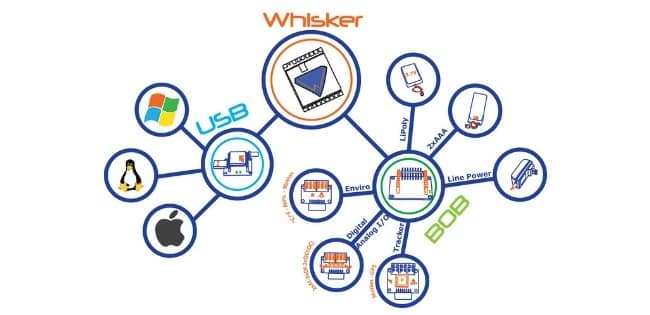
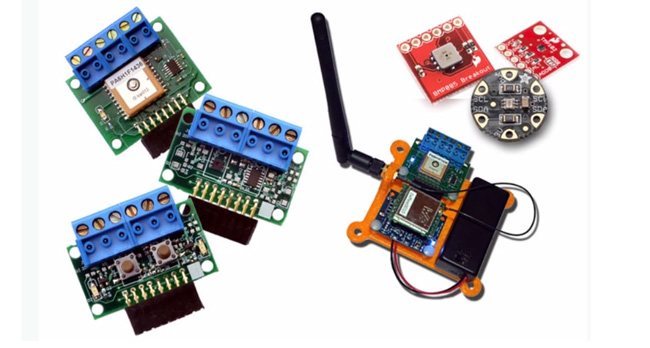

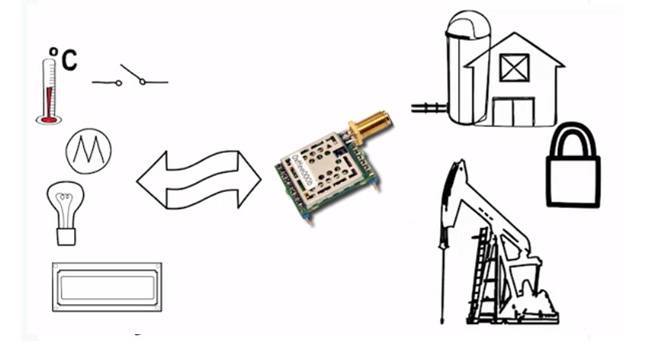
Though Whisker can handle all of the smart home uses that other IoT development kits and products target, its strengths point towards environmental sensing and rural applications where power is scarce and wide areas need to be covered. It’s also on the technical end, likely to require a bit of soldering and some programming know-how.
Microchip's LPWAN Page
Semtech's Product Page
Nwave Hardware
Chipsets and Modules
Microship RN2903 - Fully-certified 915 MHz module based on wireless LoRa® technology. (Datasheet)
Atmel ATA8520 - Single-Chip SIGFOX RF Transmitter (Datasheet)
Multitech: MultiConnect mDot
Sequans Monarch - Single-chip LTE Cat M1/NB1 solution
Pycom: LoPy
Dragino Lora/GPS_HAT for Raspberry Pi
Murata LoRa Module
Base Station Gateways / Other
Kerlink
IMST: iC880A - LoRaWAN Concentrator 868MHz
Link Labs LL-BST-8
MultiConnect Conduit
Cisco IR 910 (Can be outfitted with LoRa daughterboard)
Development Kits
Case Studies / Applications
End User Products
- Beep Networks:
- Refrigeration & Environmental Monitoring - HidnSeek (Sigfox)
- GPS Tracker - LoRaWAN Certified Products
Deployments
- The Things Network
- Sigfox: Nationwide coverage in France, Ireland, Luxemberg, Portugal, Spain and the Netherlands
- LOESK 400 thousand LoRaWAN enabled Smart Meters
- SK Telecom Commercializes Nationwide LoRa Network for IoT in South Korea
DIY
Additional resources
Business
Market Size:
- Transparency Market Research
NB-IoT Market Forecast 2016 - 2024 ($5795 - 12/2016) - Infoholic Research:
Low-Power WAN (LPWAN) Market 2016-2022 ($3500 - 8/2016) - Machina Research:
3 billion LPWA connections by 2023 - Strategy Analytics: LPWA connections will grow from 11 million connections in 2014 to just over 5 Billion in 2022. $13.4 Billion in revenue by 2022
- Analysys Mason: Market of more than 3 billion M2M connections worldwide by 2023, and generate over USD10 billion from connectivity revenue alone.
Key Acquisitions:
- Neul acquired by Huawei (N/A - 9/2014)
- Semtech acquires Cycleo ($5M - 3/2012)
Startups:
- Senet: $28.2M in 3 Rounds
- Actility: $25M in 1 Round
- Sigfox: $149.56M in 4 Rounds
Resources
Websites
Presentations
- Infiswift: LPWAN for IoT Overview (5/2016)
- Mobile Experts: Mobile and Wide-Area IoT: LPWA and LTE connectivity (1/2016 - PDF)
- Reversing Lora: Exploring Next-generation Wireless - Matt Knight - Bastille Networks (PDF)
- LPWA Networks Overview - Guillaume Crinon (11/2015)
- LPWAN Technologies for Internet of Things (IoT) and M2M Scenarios - Peter R. Egli (3/2015)
Comparisons
- Disk91: Make your IoT design on Sigfox or LoRa? (4/2016)
- LinkLabs: SigFox Vs. LoRa: A Comparison Between Technologies & Business Models (1/2016)
- Nick Hunn: LoRa vs LTE-M vs Sigfox (Free PDF - 12/2015)
Additional Reading
Reports
- IDC:Low-Power/Low-Bandwidth IoT Network Solutions ($3500 - 6/2016)
- Frost & Sullivan: An Insight into the US LPWAN Market ($1500 - 6/2016)
- ABI: IoT Wide Area Networks Report (Paid - 4/2016)
- Mobile Experts: Mobile and Wide-Area IoT: LPWA and LTE connectivity (Paid - 1/2016)
- Ericsson: Cellular networks for massive IoT (Free PDF 1/2016)
Articles
-
What is NB-IoT? Lesson 1 - Harald Naumann (11/2016)
- The IoT Pendulum Swings from LPWAN to Cellular with NB-IoT - Element14 (10/2016)
- Unraveling the Complicated IoT Connectivity Puzzle - SDX (8/2016)
- Number of Access Technologies and IoT Deployments Is Skyrocketing - Maciej Kranz 7/2016
- Light Reading: LPWAN: Choice Overload and Confusion (9/2015)
- EE Journal: Low Power, Wide Area - A Survey of Longer-Range IoT Wireless Protocols (9/2015)
- ReThink IoT: On LPWANs: Why Sigfox and LoRa are rather different, and the importance of the business model (3/2015)
- ComputerWorld: These IoT networks are 'unapologetically slow' (1/2015)
- TI: Long-range RF communication: Why narrowband is thede facto standard (3/2014 - PDF)

